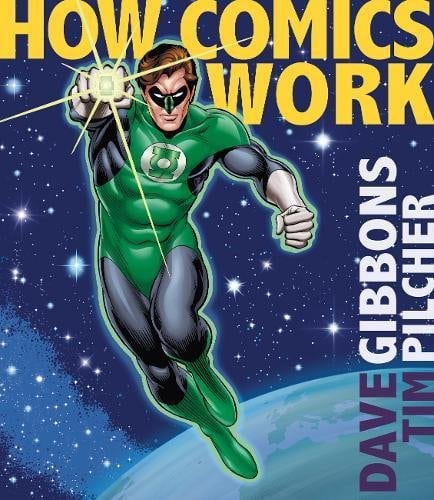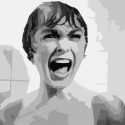
HOW COMICS WORK
by Dave Gibbons & Tim Pilcher
Available in paperback format now
Ever wanted to create your own comic? Britain’s first Comic Laureate and 2000AD artist Dave Gibbons and former assistant editor of Vertigo, Tim Pilcher, present their own written masterclass in creating the perfect comic using the techniques perfected by the artists and writers behind DC, Marvel, 2000AD and many more.
A generously sized paperback book, HOW COMICS WORK is a 191-page detailed breakdown of everything to do with comics that you’d possibly want or need to know, from the planning and preparation of the comic right through to the digital colour rendering and those sought-after cover designs.
As someone who can kind of draw cartoons on a basic level but a keener interest in reading them, I didn’t know how much this book would appeal to non-artists like myself. Upon reading the technical breakdown, accompanied by stunning artwork from Superman to Dan Dare, I began to appreciate how much knowledge the book gives to a reader in understanding how comics are put together and developed, giving readers like myself a greater appreciation in how these publications are created. The comprehensive book is detailed on all aspects of comic creation right down to the tiniest things non-artists might not even think about such as palette of colours to be used in a scene to mimic a mood, balloon positioning within a scene and the alignment and boldness of the dialogue text within them. Something like lettering is an artform in itself which is why many comics have a separate artist to do the lettering, I’ve since discovered.
For someone who’s wanting to or already dabbling in creating their own comics, the contents of this book is invaluable. With over 40 years experience, Dave Gibbons gives his particular expert insight and shares his knowledge on how certain things should be approached and considered to allow you to really get down to the nitty gritty of a task, such as layer rendering and the creation of logos that will produce a lasting impression upon the reader and become synonymous with your comic. Colour comic artwork, black & white images and pencil sketches are also used to help the reader understand the methods described in the book and the effect they can have when implemented. There’s even a few brief step-by-step examples to show the more specific tweaks that can be made. Having these images accompanying the text in the book not only brings some eye-candy to the pages but effectively conveys the message and instructions Dave is describing.
Whilst this book doesn’t give you a full-blown, intricate technical breakdown of every technique that should be utilised in your own comic (that would need more than 191 pages!), it certainly impresses with its overview of the entire comic creation process and gives enough information to make you think about the techniques you may or may not be applying to your own to seek out in detail at a later date. Having collaborated with Alan Moore and been responsible for such outstanding comics such as Watchmen and The Green Lantern as well as being one of the original artists on British cult output 2000AD. it’s fair to say the guy knows his stuff and it’s evident how knowledgable he is from the wisdom he imparts in these pages. For instance, there’s a whole chapter on colouring which goes into detail about textures, gradient, shading, photoshop brushes and lens flare and that’s just scratching the surface. With chapters on Scriptwriting, Visual Groundwork, Sequential Storytelling, Lettering, Colouring, Design and Exercises, the book truly is a complete book that no comic artist should be without.
One of the biggest draws about this book is that its informal style makes it such a breeze to read; a brilliant editing move thanks to Tim Pilcher. The relaxed, informal use of language adds a personal touch to the text as though Dave is explaining the comic concepts and methods face-to-face. The limited usage of technical jargon, except where necessary, means you don’t have to be a pro to understand what Dave is explaining. It can be understood whether you’re a novice with an interest or as someone who’s already underway with their own comic. His reference to his past projects and the example sketches and images shown alongside the write-up really helped me to visualise what exactly the outcome of certain techniques can be if achieved correctly. All of this only adds to how much work goes into creating a comic and how the smallest of details can have the biggest effects, even something as simple as character positioning within a page. Combining these factors together really packs an impressive punch as a factual piece of practical education even if you never have any intention of picking up a pencil. Having eagerly perused the book despite not being an artist myself, I have developed a deeper appreciation for all things comics thanks to the stellar passion displayed throughout these pages. I only wish I was good enoguh to draw comics myself.
HOW COMICS WORK is an outstanding book for any comic fan but for budding comic artists, this is one you simply have to add to your book collection.
Rating: 






Be the first to comment